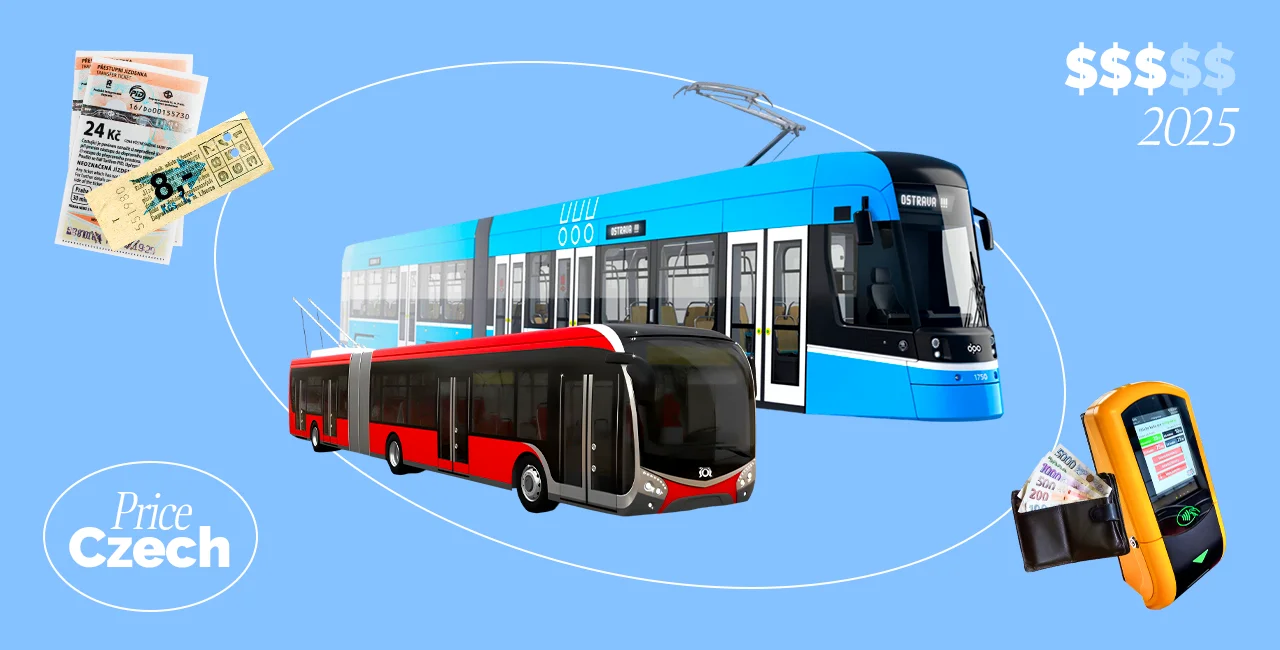As the country welcomes 2025, public transport users in Czechia are finding mixed news at ticket counters. While fares in Prague and Brno remain untouched, residents of cities like Karlovy Vary, České Budějovice, and Ostrava are facing price hikes that could leave their wallets a little lighter.
Regional cities see price rises
In Karlovy Vary, commuters are seeing the steepest increases, with the price of a three-month ticket jumping from CZK 880 to CZK 1,200, or a 36-percent hike. A weekly pass will also go up from CZK 280 to CZK 370.
PARTNER ARTICLE
Long-term tickets across the board have risen for the first time in 12 years, leaving some residents rethinking their travel habits. “That's about CZK 1,600 extra in a year. In the summer, I might think about walking,” one local commented.
České Budějovice and Ostrava have raised single-ticket prices, while Pilsen has opted for slight increases in long-term fares. In České Budějovice, the cost of a weekly pass has jumped from CZK 200 to CZK 300. In Ostrava the fare rise is less pronounced, with a one-hour single-use ticket rising from CZK 30 to CZK 32
Meanwhile, Olomouc is eyeing a fare adjustment later this year, with officials citing rising fuel and electricity costs for trams as primary factors.
Fare prices around Czechia: a snapshot
- Karlovy Vary: Three-month coupon now CZK 1,200 (up from CZK 880)
- Prague: Annual ticket remains CZK 3,650
- Brno: Annual ticket remains CZK 4,750
- České Budějovice: Single tickets rise from CZK 20 to CZK 30
- Ostrava: A 10-minute ticket rises to CZK 24
- Pilsen: Annual tickets rises from CZK 4,574 to CZK 4,656
- Olomouc: Price hikes under consideration for later in 2025
Prague and Brno hold the line
In contrast, public transport users in Prague can breathe easy—for now. The city has held annual fares steady at CZK 3,650, despite last year’s talk of potential increases.
“I unequivocally reject these proposals [to increase prices],” said Deputy Mayor for Transport Zdeněk Hřib, highlighting the city's commitment to affordable public transit, even as ticket revenues cover only 16 percent of operating costs.
Brno has also frozen fares for the 13th consecutive year, with an annual ticket still priced at CZK 4,750. The city’s transport budget, nearly CZK 3 billion this year, is heavily subsidized to keep fares affordable.
For Czech commuters, the cost of getting around in 2025 depends heavily on where they live. Prague and Brno continue to prioritize affordability through generous subsidies, while smaller cities are adjusting to rising operational costs. If you’re looking to save, locking in an annual pass in Prague or Brno remains the best value—for now.
How can I get a discount?
You may well be eligible for a sizable concession if making use of a major Czech city's public transport systems. Prague Integrated Transport (PID) offers a good example—in English—of what you can make use of (bear in mind that you'll need to provide evidence of eligibility).
Remember: buying a longer-term ticket always saves money compared to buying several short-term passes. The difference can be very big. For example, a monthly pass in Prague costs CZK 550; purchasing 12 of these would cost you CZK 6,600. On the other hand, an annual pass is priced at CZK 3,650.
Discounts in Prague
- One person with a child under the age of three – Free of charge
- Children up to 15 years old – Free of charge
- Juniors (15 to 18 years old) – 50 percent off
- Students aged 18 to 26 – 50 percent off (international students need to use their ISIC when getting a Lítačka card, or using the app)
- Seniors from age 60 to 65 – About half-price
- Seniors over 65 – Free of charge
Note: You can prove your eligibility by getting a PID Pass at selected points of sale.
It's worth bearing in mind that discounts and concessions vary across region; check official municipality websites for the latest updated prices. For example, Pilsen offers strong discounts for mothers on maternity leave (or receiving parental allowance) as well as war veterans, but requires dogs to have tickets.












 Reading time: 3 minutes
Reading time: 3 minutes 



















